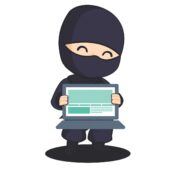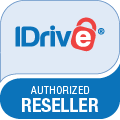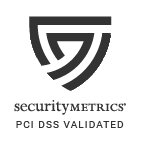The Setup
First you need to grab yourself a USB drive. You can use the one that came with your tesla if you like, though I used one that was a 256 gb drive.
Once you have the drive, you will want to create three partitions for the drive.
Partition 1 – TESLACAM
Partition 2 – LIGHTSHOW
Partition 3 – BOOMBOX
The partitions can be any size you like, but I recommend Teslacam have at least 100 gigs of space if not more depending on your drive size. Boombox and Lightshow depend how much you plan on loading on them.
Insert USB Drive: Plug in your USB drive into a USB port on your Windows computer.
Open Disk Management: Right-click on the Start button and select “Disk Management” from the menu that appears. Alternatively, you can press Win + X and then select “Disk Management”.
Locate Your USB Drive: In Disk Management, find your USB drive in the list of storage devices.
Delete Existing Partitions: Right-click on each existing partition on your USB drive and select “Delete Volume”. Confirm the deletion when prompted. This will erase all data on the USB drive.
Create Partitions: Right-click on the unallocated space of your USB drive and select “New Simple Volume”. Follow the wizard to create the first partition with the desired size. Repeat this step twice more to create three separate partitions with the desired sizes.
Format the Partitions: After creating each partition, right-click on them one by one, select “Format”, choose “ExFAT” as the file system, and assign a drive letter to each partition. You can also give them distinct labels for easier identification.
Complete Formatting: Follow the formatting wizard to format each partition with ExFAT.
Verify Partitions: After formatting, verify that all three partitions are visible in File Explorer with the assigned drive letters.
Insert USB Drive: Plug in your USB drive into a USB port on your Mac.
Open Disk Utility: Go to Applications > Utilities > Disk Utility. Alternatively, you can use Spotlight (Cmd + Space) and type “Disk Utility” to open it.
Show All Volumes: In Disk Utility, make sure all volumes are visible by selecting “Show All Devices” from the View menu.
Select Your USB Drive: From the list of devices on the left side of Disk Utility, select your USB drive. Be sure to choose the correct drive to avoid accidental data loss.
Erase the Volume: With your USB drive selected, click on the “Erase” button in the toolbar. Confirm the action if prompted.
Choose Format and Scheme: In the erase dialog, choose a partitionable format with the GUID Partition Map scheme. You can select “APFS” or “Mac OS Extended (Journaled)” for the format.
Partition the Drive: After erasing, click on the “Partition” button in the toolbar.
Create Partitions: In the Partition window, click the “+” button to add partitions. Adjust the size of each partition as desired. You can create three partitions by adding two additional partitions besides the existing one.
Format Partitions: For each partition, select “ExFAT” as the format from the Format dropdown menu.
Apply Changes: Once you’ve configured the partitions and formats, click “Apply” to apply the changes. Confirm any prompts that appear.
Verify Partitions: After the process is completed, you’ll see the three partitions mounted on your desktop. You can also verify them in Finder or Disk Utility.
Once you have the partitons created, go into each drive that should now be mounted in Windows Explorer or Finder and create the following folders on their corresponding partitions. These are case sensitive.
- TeslaCam
- LightShow
- Boombox
Adding Light Shows
Head to https://teslalightshare.io or https://xlightshows.io/light-shows
I like the first one because it’s all free.
- Find the shows you want and download the files. You will have an FSEQ and MP3 or WAV for each one.
- Copy the two files into the LightShow folder.
- Rename the files to the lightshow name, making sure to keep the file format.
- Example: ImperialMarch.fseq and ImperialMarch.mp3
- Download the next shows you want and repeat, making sure to name the files to match.
Adding a Custom Lock Sound
- Download the MP3 you want. Make sure it’s not too long or too big. The max size is 1mb.
- Convert it to WAV format at https://cloudconvert.com/mp3-to-wav
- Once you have your WAV file, copy it into the Boombox Partition, NOT the folder.
- Make sure it’s named LockChime.wav
- Now you should be able to select it in the boombox menu under USB
Adding Custom Boombox Sounds
- Download the MP3 you want.
- Copy to the Boombox folder.
- You should now be able to choose your custom sounds in boombox under horn.
Conclusion
If all is done correctly you should be able to access all custom functions from their respective menus. Nothing needs to be done for the TeslaCam folder other than creating it. The car will automatically use it for clips.
Enjoy your customization 🙂



